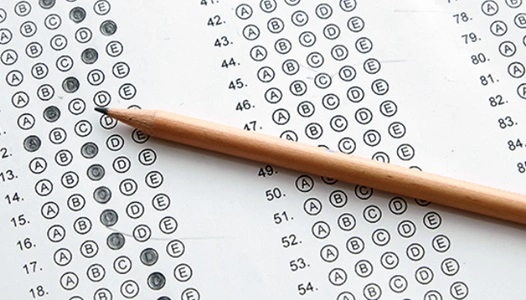Standardized testing has become a cornerstone of education systems worldwide, providing a way to measure student achievement, school performance, and educational progress. These tests, designed to assess all students under uniform conditions, are used for various purposes, including college admissions, accountability for schools, and identifying areas for curriculum improvement. While standardized testing offers several advantages, it also comes with criticisms regarding fairness, effectiveness, and impact on students.
This article explores the pros and cons of standardized testing, examining its role in education and its impact on students, educators, and society.
What is Standardized Testing?

Standardized testing refers to assessments administered and scored in a consistent manner across all test-takers. These tests typically include multiple-choice questions, essays, or performance-based tasks that evaluate knowledge, skills, or aptitude in specific subjects. Examples of standardized tests include the SAT, ACT, GRE, state-mandated assessments, and international exams like the PISA.
The goal of standardized testing is to provide objective data that can be used to compare performance across individuals, schools, districts, and even nations.
The Pros of Standardized Testing
1. Objective Assessment
Standardized tests are designed to provide an objective evaluation of students’ knowledge and skills. By using the same format and scoring system for all test-takers, they minimize subjective biases that can occur in classroom grading.
2. Accountability
Standardized tests hold schools, teachers, and students accountable for academic performance. These tests can identify schools or districts that are underperforming, encouraging improvements in teaching methods, resources, and student outcomes.
3. Comparison Across Demographics
Standardized tests allow for comparisons across different populations, such as schools, states, or countries. This data helps policymakers identify gaps in achievement and allocate resources to address disparities in education.
4. Clear Benchmarks
These tests establish clear benchmarks for academic performance, providing a standardized way to measure whether students are meeting grade-level expectations. This clarity helps educators and parents understand where students stand academically.
5. Preparation for Future Challenges
Standardized testing teaches valuable skills, such as time management, problem-solving, and critical thinking. These skills are transferable to higher education and the workplace, where standardized evaluations are common.
6. Identifies Strengths and Weaknesses
Test results can highlight areas where students excel or struggle, enabling educators to tailor instruction and interventions. This targeted approach can improve overall learning outcomes.
7. Encourages Curriculum Alignment
Standardized tests often reflect state or national educational standards, encouraging schools to align their curricula with these benchmarks. This alignment ensures that all students receive a consistent and rigorous education.
8. College Admissions
Standardized tests like the SAT and ACT provide a common metric for college admissions, helping universities evaluate applicants from diverse educational backgrounds. These scores offer a standardized way to assess academic readiness.
9. Efficiency
Administering standardized tests to large groups is relatively efficient compared to other forms of assessment. They can be scored quickly, especially when automated scoring methods are used, ensuring timely feedback.
10. Motivation for Students
For some students, standardized tests serve as a motivating factor to study harder and focus on academic goals. The prospect of achieving a high score can drive engagement and effort.
The Cons of Standardized Testing
1. Narrow Focus
Standardized tests often emphasize specific subjects like math and reading, neglecting other important areas such as creativity, critical thinking, arts, and social studies. This narrow focus can limit the scope of education.
2. Test Anxiety
For many students, standardized testing causes significant stress and anxiety, which can negatively affect performance. High-stakes testing environments may not accurately reflect a student’s abilities under normal circumstances.
3. Teaching to the Test
Standardized testing can lead to “teaching to the test,” where educators focus primarily on test-related material at the expense of broader learning. This approach can stifle creativity and reduce the richness of classroom instruction.
4. Limited Measurement of Skills
Standardized tests primarily assess academic knowledge and skills, often failing to measure qualities like leadership, resilience, collaboration, or emotional intelligence, which are equally important for success.
5. Bias and Inequality
Critics argue that standardized tests are biased toward certain socioeconomic, cultural, or linguistic groups. Students from underprivileged backgrounds or non-native English speakers may face disadvantages, perpetuating educational inequities.
6. Overemphasis on Scores
Placing too much weight on test scores can overshadow other indicators of student achievement, such as class participation, projects, or extracurricular activities. This overemphasis may also lead to a one-dimensional view of education.
7. Impact on Teachers
Standardized testing can put immense pressure on teachers, whose performance evaluations may be tied to student test scores. This can lead to job dissatisfaction, burnout, and even unethical practices, such as manipulating test results.
8. Resource Allocation Issues
Schools may divert resources toward test preparation rather than addressing broader educational needs. Underfunded schools may also struggle to provide adequate support for students, exacerbating achievement gaps.
9. Cheating and Mismanagement
High-stakes testing environments have led to instances of cheating, both by students and educators. Additionally, mismanagement of testing materials or errors in scoring can undermine the credibility of the results.
10. Lack of Individualization
Standardized tests do not account for individual learning styles, abilities, or interests. This one-size-fits-all approach may fail to recognize the unique strengths and potential of each student.
Who Benefits from Standardized Testing?
- Policymakers and Administrators: Standardized tests provide data that informs policy decisions, resource allocation, and accountability measures.
- Colleges and Universities: These tests offer a uniform metric to evaluate applicants, simplifying the admissions process.
- Educators: Test results can highlight areas for improvement in teaching methods and curriculum design.
- Students: For some, standardized tests offer a pathway to scholarships, advanced programs, and academic recognition.
However, the benefits may not be evenly distributed, as students from disadvantaged backgrounds often face more significant challenges with standardized tests.
Alternatives to Standardized Testing
To address the drawbacks of standardized testing, some educators and policymakers advocate for alternative assessment methods, including:
- Portfolio Assessments: Evaluating a collection of a student’s work over time.
- Project-Based Learning: Assessing students through hands-on projects and presentations.
- Formative Assessments: Ongoing evaluations that provide feedback during the learning process.
- Performance-Based Assessments: Testing real-world skills through simulations or practical tasks.
These approaches emphasize a more holistic evaluation of student abilities but may require more time and resources to implement.
Tips for Maximizing the Benefits of Standardized Testing
- Balance Testing with Other Assessments: Use standardized tests as one of many tools to evaluate student learning and performance.
- Provide Test Preparation: Offer students access to resources and practice tests to reduce anxiety and improve performance.
- Focus on Equity: Address barriers that disproportionately affect disadvantaged students, such as access to test preparation or technology.
- Educate Stakeholders: Help parents, students, and educators understand the purpose and limitations of standardized tests.
Conclusion
Standardized testing plays a significant role in modern education, offering benefits like objective assessment, accountability, and the ability to compare performance across demographics. However, its limitations—including stress, bias, and a narrow focus—highlight the need for a more balanced approach to evaluating student achievement.
By understanding the pros and cons of standardized testing, educators, policymakers, and parents can work toward creating a more equitable and effective educational system. While standardized tests may not be perfect, they remain a valuable tool when used thoughtfully and in combination with other assessment methods.


